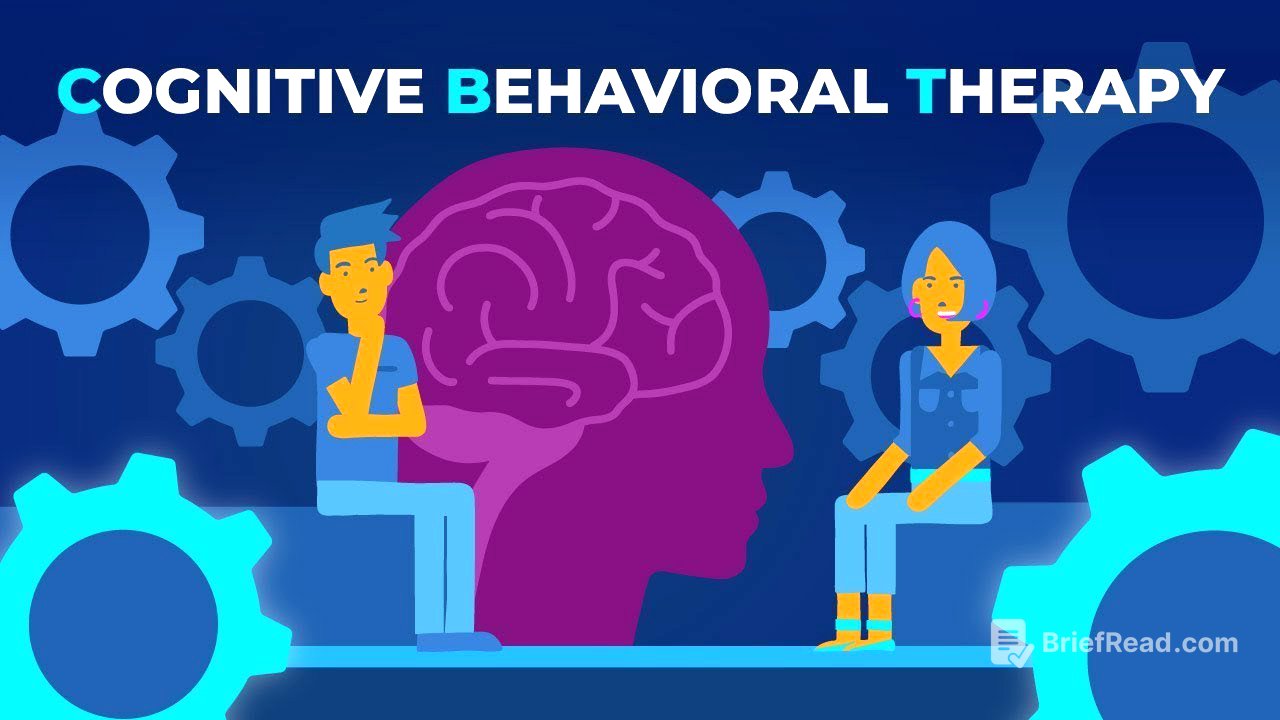TLDR;
This video explains Cognitive Behavioral Therapy (CBT) and its four-step process for managing negative thought patterns. CBT is based on the idea that our thoughts, feelings, and behaviors are interconnected, and changing our thoughts and behaviors can lead to changes in how we feel. The four steps include identifying negative thoughts, challenging them with evidence, generating alternative thoughts, and developing coping strategies.
- Identify negative thoughts and automatic reactions.
- Challenge negative thoughts by examining supporting and contradicting evidence.
- Generate alternative, more constructive interpretations of situations.
- Develop coping strategies to deal with negative thoughts and emotions effectively.
Identifying Negative Thoughts [0:24]
The first step in CBT involves becoming aware of negative thoughts and automatic reactions to situations. This requires paying attention to the thoughts that accompany feelings of distress, such as anxiety, sadness, or anger. Keeping a thought diary or journal can help track thoughts and emotions in specific situations. By identifying these negative thoughts, individuals can begin to understand the connection between their thoughts, feelings, and behaviors.
Challenging Negative Thoughts [1:16]
Once negative thoughts are identified, the next step is to challenge them by examining the evidence that supports or contradicts them. This involves questioning the accuracy and helpfulness of these thoughts. By evaluating the evidence, individuals can begin to see that their negative thoughts may not be entirely true or accurate.
Generating Alternative Thoughts [2:29]
After challenging negative thoughts, the next step is to generate alternative interpretations of the situation, considering both positive and negative aspects. This involves challenging automatic negative thinking patterns and developing more flexible ways of thinking. By practicing generating alternative thoughts, individuals can gradually shift their thinking towards a more constructive and optimistic outlook.
Developing Coping Strategies [3:31]
The final step involves developing coping strategies to deal with negative thoughts and emotions more effectively. This may include learning relaxation techniques, problem-solving skills, assertiveness training, or social skills. Therapists can help identify specific coping strategies tailored to individual needs and circumstances. Practicing these strategies in therapy sessions and applying them in daily life can help individuals navigate life's challenges.








